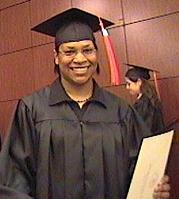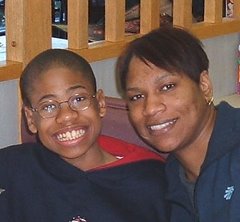Traveling tips for families with an autistic child
by Chantal Sicile-Kira
Traveling with children may not seem like such a big deal. However, when one of them has an autism spectrum disorder, it adds an extra dimension.
Chantal Sicile-Kira, author of Autism Spectrum Disorders
<http://www.amazon.com/exec/obidos/ASIN/0399530479/sheknowscom03-20>
and host of a weekly radio show "The Real World of Autism with Chantal" on Autism One Radio (http://www.autismone.org/), has traveled widely with her autistic son. She offers some insight.
Many families who have an autistic child do not travel because they are concerned about how the child will handle the change and disruption, or are overwhelmed at the thought of managing the certain behaviors their child might exhibit in public.
Leaving the security of home to a new place can be off putting for a child with autism. All the preparation may seem a bit daunting, but it pays to plan ahead.
In my book, I offer the following suggestions for preparing to travel with your child, which can be adapted to suit your child's needs. How you prepare your child depends on his age and ability level; and taking a short trip is recommended before attempting long voyages.
* Airports and train stations are areas that involve lots of waiting. Teach your child the "waiting" skill if he does not have it. Make or find a picture that will represent "waiting" to your child, such as a line drawing of a "stick" person sitting in a chair, with the face of a clock next to it. Write "waiting" clearly on the card. Glue to cardboard, laminate it and place a piece of Velcro somewhere on it. Next, make sure you have picture of whatever items your child usually requests or wants immediately (favorite food, toy, ride in the car) backed with Velcro.
Have a second's timer available. When you are ready to teach this skill, have the favorite items you know the child likes available to you, but out of sight and reach of the child. The next time your child communicates tha the wants that preferred item, put the picture on the Velcro on the waiting card, then put the timer on for a few seconds. Say, "we are waiting" and point to the card. When the timer goes off, immediately give him the desired item.
Some children need to start with a wait of only five seconds, and work on up from there. Others can start at 10 seconds or even closer to a minute. Once your child has learned to wait for a certain amount of time, add more time in small increments. Eventually, your child will understand that he WILL get what he asked for; it is only a matter of time. Then, when the family is preparing to go out, you can put the picture representing where you are going on the waiting sign and put the timer on 10 minutes (for example) before leaving the house. This will give him a heads up about when you are going, and where. When traveling, you can take the waiting sign, timer and goodies with you if necessary. Some may not need it, others will.
* Put up a monthly calendar with the departure date clearly marked, and hasthe child check off every day until departure. Bring the calendar with you and mark off number of days in one place or on the trip, always having the return date indicated.
* Put together a picture and word "travel book" of what means of transport you are going to be using to, who you are going to see, where you will sleep, and what you will do or see at your destination. Go over this with your child, like you would a storybook as often as you like in preparation for the trip. Using a three-ring binder is best, as you can add extra pages or insert the calendar mentioned above for use on the trip.
* Put together a picture or word schedule of the actual journey to take with you on your trip. Add extra pages to the travel book. Add Velcro and attach pictures or words in order of the travel sequence. Add an empty envelope to add the "done" pictures when you have finished one step of the journey. For example, if you are flying to another city, start with a picture of the taxi or car that will take you to the airport. (When you are at the airport, have him remove the taxi) picture and put it in the envelope. Then have a picture of the airport, followed by the waiting picture, and then theairplane, followed by the airport, then the waiting sign, the taxi and then the hotel.
* Think of your child's daily routine and the items he likes or needs for his routine and bring them along to make him feel more at home. Bringwhatever foods and drinks will keep him happy on the trip.
* Buy some small, inexpensive toys that he can play with and that if youlose it will not be the end of the world. If he only plays with one favorite item, try to find a duplicate and see if you can "break it in" before the trip. Do not wash any items (including plush toys) before the trip as the child may feel comfort in the "home" smell of his cherished item.
* When staying in a hotel, It is a good idea to call ahead and ask for a quiet room. You may wish to explain about your child's behavior if there is a likelihood of your child exhibiting them in the public part of the hotel. Same with a friend or relative's home. It can be a bit disconcerting for everyone concerned if your child takes his clothes off and races through your friend's home stark naked.
* Make sure your child has an id tag attached to him somewhere, with a current phone number written on it. You can order medical bracelets, necklaces and tags to attach to shoe laces for your child. Additionally, if your child can carry it in his pocket, make an ID card with a current photo, date and phone numbers. Be sure to put any information that is important to know such as allergies and medications, and any special information (i.e.non-verbal).
If you are traveling by plane, Sicile-Kira recommends that you call the airlines as far in advance as you can, and tell them you will be traveling with someone who has special needs. Some airlines have "special assistance coordinators." You may wish to explain about your child's needs and some of the behaviors that may affect other travelers, such as rocking in the seat. You may also request that assistance be provided to help you with your child and luggage to get to the gate, and ask that assistants meet you at the airplane upon arrival. Remember, the person may not understand about your needs. They may ask you questions and say that assistance is only for the physically handicapped, so you may need to explain in concrete terms why you need help.
For more information, visit the author's website at www.chantalsicile-kira.com.
Reprinted here with permission.
For more information and resources on autism go to:
http://www.autismconcepts.com/.
Forget what you haven't heard… Family site shares news, resources, announcements and free or low-cost ways to help us manage day-to-day living with autism.
Crystal Brown

About Me

- Crystal
- AutismConcepts.com and Child-Autism-Parent-Cafe.com share a large collection of useful autism information, resources, and how-to articles written by authors who are touched by autism, offering practical solutions to families. Particularly minority and underserved families and caregivers who may not know what to do or where to go for help.
MJ And Me

Blog Archive
-
▼
2005
(194)
-
▼
March
(44)
- Signs of autism can be seen in infants
- Study: Autism linked to mirror neuron dysfunction
- The David Center Scholarship for Parents or Guardians
- Autism's echoes fill this home (Article on family ...
- Autism - Mercury Poisoning, Epidemic levels breach...
- Mass Drugging of School children: The Dark Secret ...
- New BOCES Report Cards
- Pick Your Poison - New Republic article on mercury
- Traveling tips for families with an autistic child...
- UC M.I.N.D. Institute Report on Autism Rates in CA
- Videos to IOM Immunization Safety Review Committee...
- Study: Environmental Mercury Release, Special Ed R...
- African-American families more accepting of home s...
- Study: Mercury Pollution, Autism Link Found
- National Vaccine Injury Compensation Program Impro...
- New flu vaccine for kids hits the market
- First Alert Door Alarm
- Autism News Report - FOX News and IMUS
- The Age of Autism: Backward
- Navigating Medicare and Medicaid, 2005: Resource G...
- Key Facts: Race, Ethnicity & Medical Care
- The Role of Health Coverage for People with Disabi...
- Committee on Government Reform Autism Hearings
- The Mercury Calculator
- New Proposed Bankruptcy Legislation Will Hurt Pare...
- Study: MMR Japan study versus Wakefield and Stott ...
- Study: US study confirms bowel disease findings in...
- Study: Eye contact triggers threat signals in auti...
- U.S. Autism Rates Rise Sharply
- CDC Finally Takes Action on Dangers of Common Chil...
- Racial Inequity in Special Education, Civil Rights...
- Educating Children with Autism, Nat'l Academies of...
- Minorities Get Inferior Care Even if Insured Study...
- Aid for autism
- "Talking About Medicare," New Online Guide
- A User-Friendly Vaccination Schedule
- "Mercury in Medicine" Report, U.S. Gov't. Reform C...
- Individuals with Disabilities Education Act (IDEA)...
- "Special Education: Children with Autism", GAO Report
- Free Online Advocacy Program
- Autism Radio
- Free Newsletters from Autism Research Institute
- Need help getting a computer or Internet service?
- Are We Giving Children All They Need?
-
▼
March
(44)